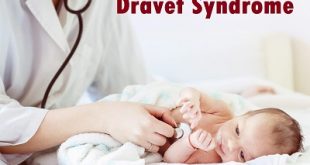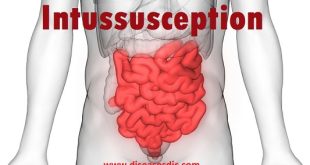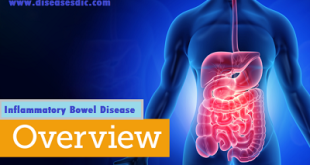Definition
Infantile spasms, also known as West syndrome, is a rare and severe form of epilepsy that typically occurs in infants during the first year of life, most commonly between 3 and 8 months of age. It is characterized by brief, sudden muscle contractions or spasms that often cluster together in a series. These spasms can involve various muscle groups and may cause the baby’s arms and legs to jerk or their body to flex forward. Infantile spasms can be particularly concerning because they can be difficult to recognize, and early diagnosis and treatment are crucial.
In addition to the physical symptoms, infants with this condition often experience developmental regression, which means they may lose previously acquired developmental milestones, such as the ability to make eye contact or smile, leading to intellectual and developmental disabilities in the long run. The exact cause of infantile spasms is not always clear, but it can be associated with various underlying neurological conditions, genetic factors, or brain abnormalities. Early detection and intervention are essential for managing the condition and improving outcomes.
Epidemiology
Infantile spasms (IS) are an epileptic disorder of infancy and young childhood. Over 90 percent of cases present before 1 year of age and the average age of onset is between 3 and 7 months. The incidence of IS is approximately 1.6-4.5 cases per 10,000 live births. Both males and females are affected equally and there is no difference in incidence among ethnic groups.
Pathophysiology
The pathophysiology involves a complex interplay of factors, including underlying brain abnormalities, disruptions in neurotransmitter balance (especially GABA and glutamate), cortical dysplasia, immature brain development during a critical period, hormonal fluctuations (involving ACTH and cortisol), genetic influences, and potential inflammation within the brain. This combination of factors can lead to the characteristic seizure patterns and developmental regression seen in infantile spasms, although the specific mechanisms may vary among individuals. Ongoing research aims to unravel the intricacies of this condition to enhance diagnostic and therapeutic approaches, emphasizing the importance of early detection and intervention to improve outcomes.
Types of Infantile Spasms
There are different types and subtypes including:
- Symptomatic Infantile Spasms: This is the most common type of infantile spasms and is associated with an underlying brain injury or condition, such as a structural brain abnormality, brain malformation, or genetic disorder.
- Cryptogenic Infantile Spasms: In these cases, no clear underlying cause is identified despite thorough evaluation. The term “cryptogenic” means that the cause is hidden or not readily apparent.
- Idiopathic Infantile Spasms: This subtype is characterized by the absence of any known underlying brain abnormalities or structural issues. Idiopathic infantile spasms are relatively rare, and the cause is often considered to be genetic.
- Infantile Spasms of Unknown Cause: In some instances, healthcare providers may not be able to determine the specific cause of the infantile spasms, and they may fall into this category.
Causes of Infantile Spasms
Many infants have an underlying brain disorder or injury. These can include:
- An injury caused by lack of oxygen during delivery.
- An infection (such as meningitis or encephalitis).
- A metabolic disorder.
- A genetic disorder. An example is tuberous sclerosis, a rare disease that causes noncancerous tumors to grow throughout the body.
- A congenital disease. An example is cortical dysplasia, a condition that results from abnormal brain development.
In some children, no cause for infantile spasms can be found.
What are the symptoms of Infantile Spasms?
The most recognizable symptom of infantile spasms is the sudden and brief stiffening of a baby’s muscles. However, in some cases, symptoms are more subtle and look closer to a head nod or quick eye motion. Other typical symptoms of infantile spasms include:
- Clustered of short spasms that occur in a pattern.
- Spasms that wake babies from sleep.
- Jackknife seizures. This is when a baby’s body bends forward with their knees pulled up and arms thrown out their sides.
- Body and leg stiffening with their head thrown back.
- Decline in visual alertness.
Babies who have infantile spasms may also experience noticeable changes in development as a symptom. They can start to experience delays or regress in their development. Delays in development may be seen through a noticeable slowdown in their progression of reaching milestones. While developmental regression can be seen through a loss of skills that were already learned/achieved.
Complications of Infantile Spasms
It can have several complications, which include:
- Developmental Delays: Children with infantile spasms may experience delays in their physical and mental development.
- Intellectual Disabilities: Some children may develop intellectual disabilities, affecting their learning and problem-solving abilities.
- Behavioral Problems: Behavioral issues such as attention problems and hyperactivity may arise.
- Speech and Language Delays: Many children with infantile spasms may have difficulties with speech and language development.
- Motor Skill Impairments: Fine and gross motor skills may be affected, leading to problems with movement and coordination.
- Epilepsy: Infantile spasms can evolve into other forms of epilepsy, making it a lifelong condition for some.
- Psychosocial Challenges: The condition can place stress on families and caregivers, affecting their emotional well-being.
- Medication Side Effects: Medications used to treat infantile spasms can have side effects that may necessitate additional medical management.
- Social and Educational Challenges: Children may struggle with social interactions and face educational challenges due to their developmental delays.
- Quality of Life: The overall quality of life for a child with infantile spasms and their family may be significantly impacted.
Risk factors
The exact cause is often unknown, but there are some risk factors that may increase the likelihood of a child developing this condition. These risk factors include:
- Age: Infantile spasms typically begin between 3 and 12 months of age, with the majority of cases occurring before the age of 6 months.
- Underlying Brain Conditions: Children with certain underlying brain conditions or abnormalities, such as tuberous sclerosis complex, Down syndrome, or structural brain abnormalities, are at higher risk.
- Family History: Having a family history of epilepsy or other seizure disorders may increase the risk.
- Premature Birth: Premature infants are at a higher risk of developing infantile spasms.
- Infections: Some infections during pregnancy or in infancy may increase the risk of infantile spasms.
- Brain Injuries: Any form of brain injury, such as a head injury or lack of oxygen during birth, can be a risk factor.
- Metabolic Disorders: Certain metabolic disorders, although rare, can increase the risk of infantile spasms.
- Genetic Factors: In some cases, specific genetic mutations have been linked to infantile spasms.
Diagnosis and tests
Your child’s healthcare provider will ask detailed questions about your child’s symptoms and medical history. They’ll also perform a physical exam.
Your child may have to see a pediatric neurologist or pediatric epileptologist. They’ll order a test called an electroencephalogram (EEG) to confirm the diagnosis of infantile spasms and other tests to find the cause. Since there are hundreds of possible causes of infantile spasms, it can be more difficult for healthcare providers to identify the cause.
What tests will be done to diagnose infantile spasms?
Your child’s healthcare provider will order an electroencephalogram (EEG) to confirm the diagnosis of infantile spasms.
An EEG measures and records your child’s brain’s electrical signals. During an EEG, a technician places small metal disks (electrodes) on your child’s scalp. The electrodes attach to a machine that gives your baby’s healthcare provider information about your child’s brain activity. Ideally, the EEG will capture their brain’s activity while they’re having a spasm, as well as the time in between spasms. Healthcare providers look for a distinct EEG pattern called hypsarrhythmia. This pattern is very particular and makes it easy for healthcare providers to diagnose infantile spasms with certainty in most cases.
Tests your child’s healthcare provider may order to determine the causes include:
- Magnetic resonance imaging (MRI) brain scan: An MRI brain scan is a painless test that produces very clear images of the structures and tissues in your child’s brain. MRI uses a large magnet, radio waves and a computer to produce the detailed images. It doesn’t use X-rays (radiation). An MRI can help your child’s healthcare provider determine what’s causing their spasms.
- Genetic and metabolic tests: If your child’s MRI is normal, their healthcare provider will likely order other tests, such as genetic and metabolic tests, to try to determine the cause of the spasms. These tests typically require a sample of blood, urine (pee) or spinal fluid.
Treatment
The treatment options typically aim to control the seizures and prevent further developmental regression. The choice of treatment depends on the specific needs of the child and should be determined in consultation with a pediatric neurologist or epileptologist. Here are some common treatment options:
- Adrenocorticotropic Hormone (ACTH): ACTH is a hormone that can be injected into the infant. It is often considered the first-line treatment for infantile spasms. ACTH helps reduce the frequency and intensity of spasms in many cases. However, it can have significant side effects and may require careful monitoring.
- Oral Corticosteroids: If ACTH is not available or not effective, oral corticosteroids like prednisone or prednisolone may be prescribed. These medications can also help control seizures but may have side effects like weight gain and irritability.
- Vigabatrin: In some cases, the antiepileptic medication vigabatrin may be used, especially if ACTH or corticosteroids are ineffective or not well-tolerated. Vigabatrin is often considered for infants with tuberous sclerosis complex, a condition that can cause infantile spasms.
- Other Antiepileptic Medications: Occasionally, other antiepileptic drugs like topiramate, valproic acid, or zonisamide may be used, but they are generally considered less effective than ACTH or corticosteroids.
- Ketogenic Diet: For some children who do not respond to medication, a ketogenic diet (high in fats and low in carbohydrates) may be considered. This diet can help control seizures in some cases.
- Surgery: In rare instances, when other treatments fail, and if there is an identifiable brain lesion or structural abnormality causing the seizures, surgery may be considered to remove or treat the underlying cause.
- Early Intervention and Therapy: Regardless of the medication or treatment chosen, early intervention services such as physical therapy, occupational therapy, and speech therapy are essential to support the child’s development and improve their long-term outcomes.
It’s important for parents and caregivers to work closely with a healthcare team to determine the most appropriate treatment plan for their child’s specific case. Early diagnosis and intervention are crucial to improving the prognosis for infants with infantile spasms. Regular follow-up appointments and monitoring are typically necessary to adjust treatment as needed and assess the child’s progress.
Prevention of Infantile Spasms
Preventing entirely may not be possible in many cases. However, there are certain steps and considerations that can help reduce the risk or catch the condition early:
- Good Prenatal Care: Regular check-ups during pregnancy can help identify potential issues. Eat well and avoid harmful substances.
- Genetic Counseling: If there’s a family history of neurological disorders, consider genetic counseling to understand risks.
- Vaccinations: Ensure your child gets recommended vaccinations to prevent infections that can trigger spasms.
- Early Detection: Watch for signs like developmental delays or unusual movements. If you see any, consult a doctor promptly.
- Quick Medical Attention: If diagnosed with infantile spasms, follow the treatment plan and attend regular check-ups.
- Medication Adherence: Give prescribed medications as directed by the doctor for seizure control.
- Supportive Care: Get early therapy services (like physical, occupational, and speech therapy) to help your child’s development.
Remember, even if you take precautions, infantile spasms can still occur. Early detection and treatment are vital for better outcomes.
 Diseases Treatments Dictionary This is complete solution to read all diseases treatments Which covers Prevention, Causes, Symptoms, Medical Terms, Drugs, Prescription, Natural Remedies with cures and Treatments. Most of the common diseases were listed in names, split with categories.
Diseases Treatments Dictionary This is complete solution to read all diseases treatments Which covers Prevention, Causes, Symptoms, Medical Terms, Drugs, Prescription, Natural Remedies with cures and Treatments. Most of the common diseases were listed in names, split with categories.







